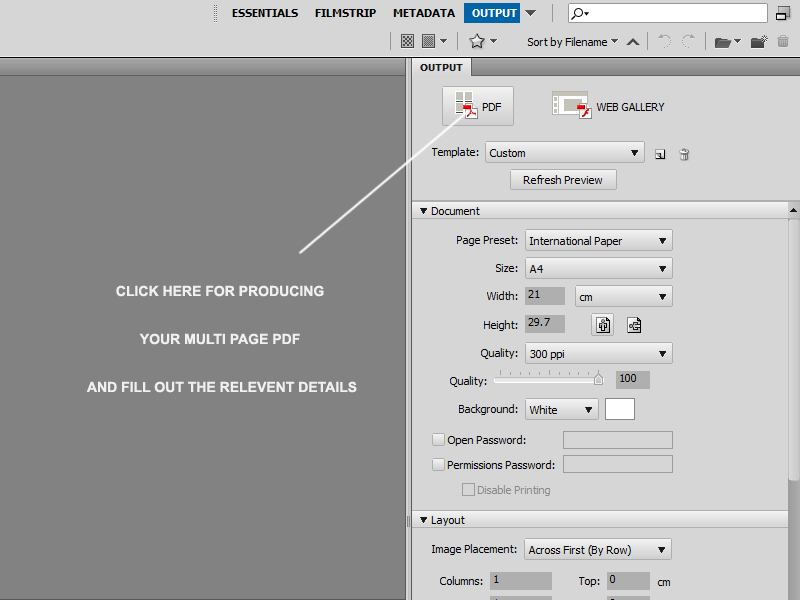

These special files allow you to open them in Photoshop later, and have complete access to every Layer and edit you’ve made. Photoshop utilizes its own proprietary filetype called a PSD (or Photoshop Document). Saving a PSDĪll this talk of Layers makes it important to note that you should always save a layered file of your work.
#OPEN PDF IN PHOTOSHOP WITH LAYERS FREE#
That means you can paint, save the PSD, open it later on and be free to change or remove the Brush Strokes as you see fit. If you first create a new Layer on top of the original image, you can paint freely on that Layer and those effects will be totally isolated from the underlying image. This is a destructive process! If you were to save it and open it up later, you’ll see the image covered in whatever you painted and you won’t be able to remove it or change it. If you activate the Brush Tool and start painting, you’ll be drawing on (and changing the pixels of) your original image. Selecting the Brush Tool does not create a new Layer. You create text or a shape, they automatically appear as a new Layer in the Layers Panel.īut let’s say you wanted to paint over the image with the Brush Tool. Whenever you add to or adjust an image, always work on a new Layer. And Layers are the primary tool through which we do it. What does that mean? Working non-destructively means that you can, at any time, remove or disable edits you’ve made to get back to the original, unaltered photography. And the number one thing to focus on is developing a non-destructive workflow.

Layers are the most important thing to understand as you’re getting familiar with Photoshop. We’ll go over Layers more in-depth in day 3 of 30 Days of Photoshop, but for now we’ll just cover the basics. Once your photo (or photos) appear in the Layers Panel, the editing magic can begins. If you opened multiple images, you can get them into the same project by clicking and dragging on the image or the Layer and moving it over the other image. With your image open in Photoshop, you’ll notice it now appears in the Layers Panel as a Layer labeled Background. You can enable or disable tabs by going to the Photoshop menu, clicking on Preferences, opening the Workspace settings, and checking/unchecking Open Documents as Tabs. We prefer to avoid using tabs, as we find it’s easier to navigate and move images between projects.

You can use tabs, which will display each image separately and accessible via tabs near the menu bar (similar to how web browsers display multiple windows). Once your images are in Photoshop, you have options for how you want them displayed.
#OPEN PDF IN PHOTOSHOP WITH LAYERS WINDOWS#
The other option is to drag and drop the images from your Finder or Windows Explorer window onto the Photoshop canvas. This should feel familiar as most other programs use this same method. With Photoshop open, click on File, Open, and then navigate to the folder where your image is saved. The first is the standard File Menu route. There are a couple ways to do this, so go with the method that fits in best with how you normally like to work on a computer. Most of the time you’ll start a Photoshop project by opening an image.


 0 kommentar(er)
0 kommentar(er)
